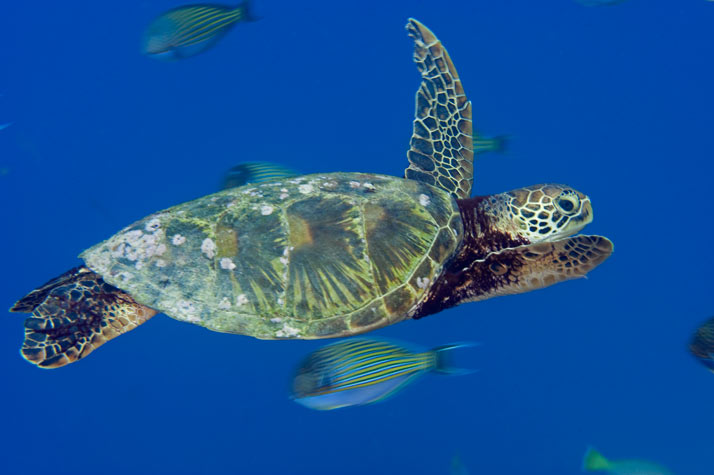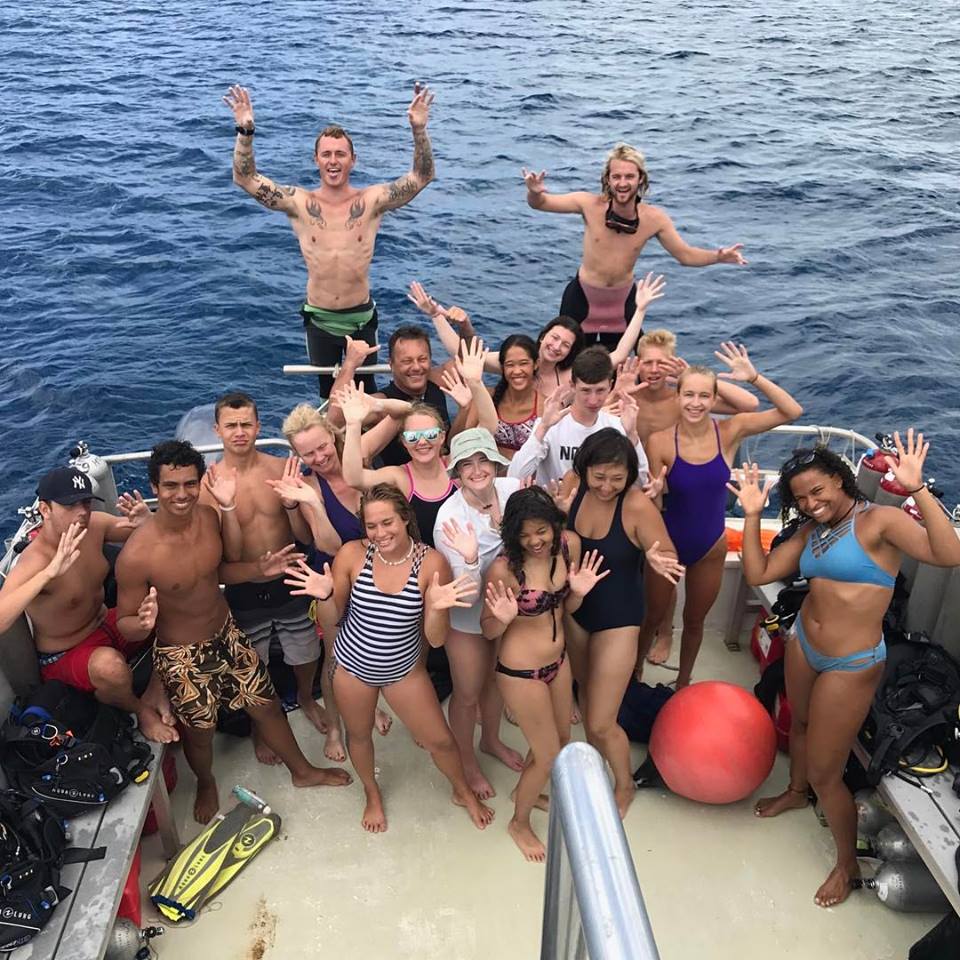
by Catherine Shuff, age 18, Morgantown, Pennsylvania
The 2017 Ocean Matters trip was truly a once in a lifetime experience, one that I won’t be forgetting anytime soon. I was given the opportunity to travel to a beautiful place, meet amazing people from all across the country, and see the world in a completely different way; underwater.
I’ve been enthralled with learning about sunken ships since I’ve been young, having had multiple books about the Titanic and her sister ships. When we were told the our last dive of the trip was going to be a wreck dive, I was nothing short of excited (and also extremely anxious). The YO 257 and the San Pedro wrecks, both sunken intentionally in order to create artificial reefs, sat with their top decks at around 80 feet (24 m) deep.
Before we submerged, one of our dive instructors, Peter, gave an unforgettable bit of advice: “Before you cross in between the wrecks, make sure to look both ways, like you’re crossing a street. There’s a submarine that comes through that’s been known not to stop.” With that information in mind, my fellow divers and I strapped on our gear, jumped off the boat, and started to descend.
It was at this point during the dive that I began to wonder what these reefs may look like in ten, twenty, or even fifty years from now.
Looking below as we descended, the shadowy outlines of the wreck were becoming more visible by the second. As we got closer and started to truly observe our surroundings, I was taken aback by the enormity of the ships, and the life within them.
Turtles, sharks, and a barracuda were just a few of the creatures spotted living among the wrecks, not to mention the vast schools of brightly colored parrotfish, goatfish, and Moorish Idols. Coral and urchins dotted the rusted metal exteriors, providing shelter and food for so many wonderful creatures.
It was at this point during the dive that I began to wonder what these reefs may look like in ten, twenty, or even fifty years from now. Would they have grown to cover the entirety of the metal skeletons? Or would climate change and overfishing render these reefs, and so many like them around the world, stagnant and dying?
As someone who has now had the opportunity to see these breathtaking underwater habitats for myself, I implore each and every one of us to live our lives so that we may continue to explore these beautiful natural surroundings with future generations.

